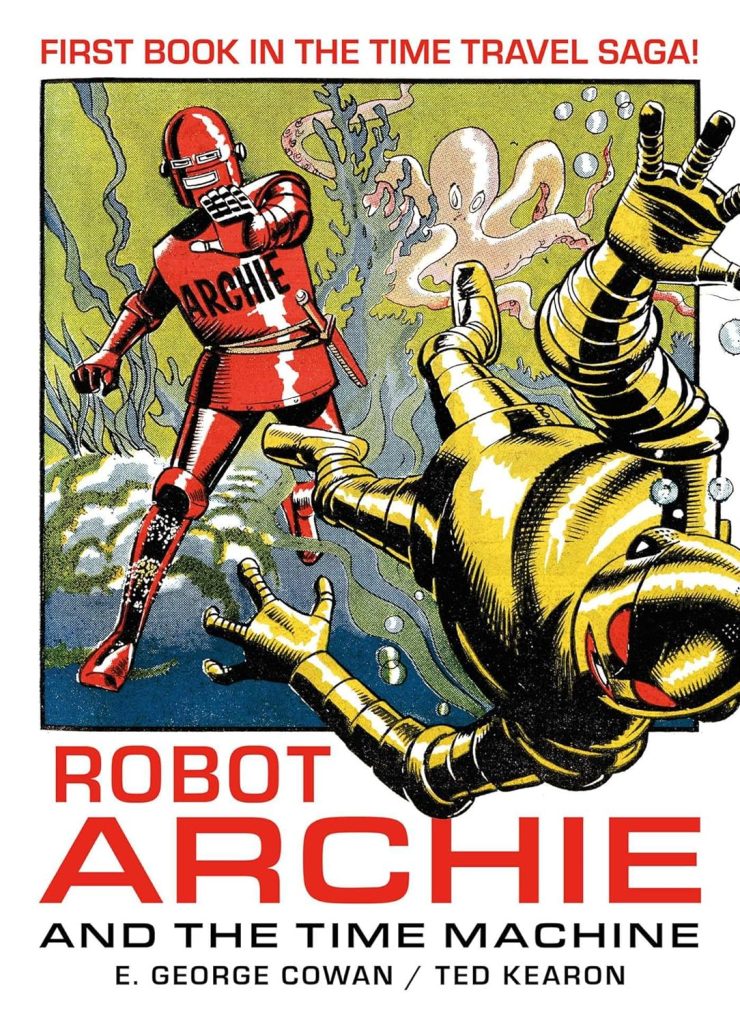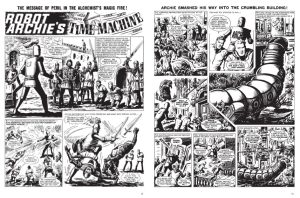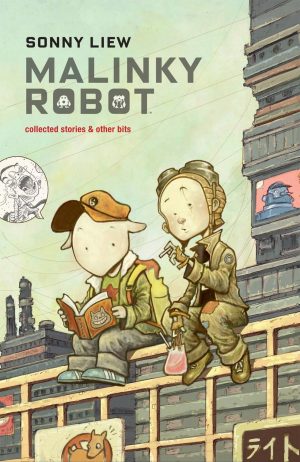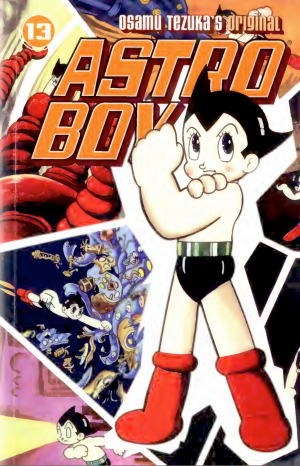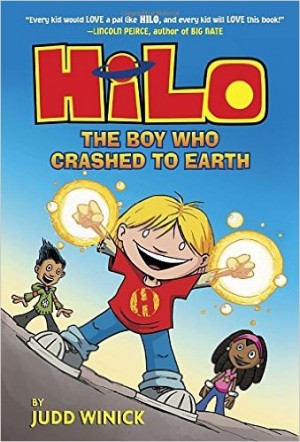Review by Ian Keogh
Robot Archie was a 1960s comics mainstay whose start was faltering, only lasting six months when introduced in 1952. Like a proto-X-Men, a 1957 revival was successful and his adventures ran weekly until 1971. It’s surprising a collection’s not been issued before, but Archie is a troublesome feature. Much of it is very much of its era, when a clunky humanoid robot with his name sprayed across its chest was a startling innovation. These reprints don’t begin with his début or his revival, but a sequence starting in 1968, far nearer the end of his run than his beginning, by which time Archie has his own intelligence rather than responding to commands.
It marked a change for Archie, as rather than touring the world having adventures in the present day, another invention of his creator enabled time travel. Accompanied by his creator’s nephew Ted and his mate Ken, their time travel device, a Tardis by any other name, is designed to resemble a giant rook from a chess set. Under writer E. George Cowan there’s no concerns about actions in the past upsetting the present as adventure is the priority.
The first third of Archie and the Time Machine sees the mechanical marvel setting about a brutal 14th century tyrant. Duplicity and manipulation abound, but Cowan’s not above having Archie develop a convenient new power for any occasion. Writing for a younger audience, narrative sophistication is trumped by excitement every time. Following that it’s a trip to the sweltering tropical London of 2050 to deal with the Superons, then back to the 1700s to rescue a kidnapped magistrate, with the bonus self-contained feature having Archie meet the pirate Blackbeard.
Artist Ted Kearon is from the old school of packing each panel, yet also frequently finds space for a larger image within his three page allocation in addition to that starting each episode. Like Archie himself, it’s a very dated look, but mitigated somewhat by being set in the past and the future. Kearon has some fun with Archie occasionally wearing a hat, and is convincing with his movement, but Ted and Ken are stiff and unappealing despite being co-stars. Modern readers may well ask if they’re more than mates as well.
In reality, of course, their purpose is as the one-note commentary team either bewildered at what Archie’s up to or correcting him on his unconventional foresight. Week by week the repetition wouldn’t be as obvious as in this collection. Archie himself as egotistical and self-confident is better characterisation and provides funny moments, but the dialogue is very much of the times.
Mike Western draws the pirate story, and there’s far greater energy to his interpretation of Archie, but the unidentified artist drawing the final story of Archie and cavemen is rudimentary.
The Treasury of British Comics collections have delight, reminding us of life in British comics before 2000AD, but some don’t make that leap, and Robot Archie is among them.
